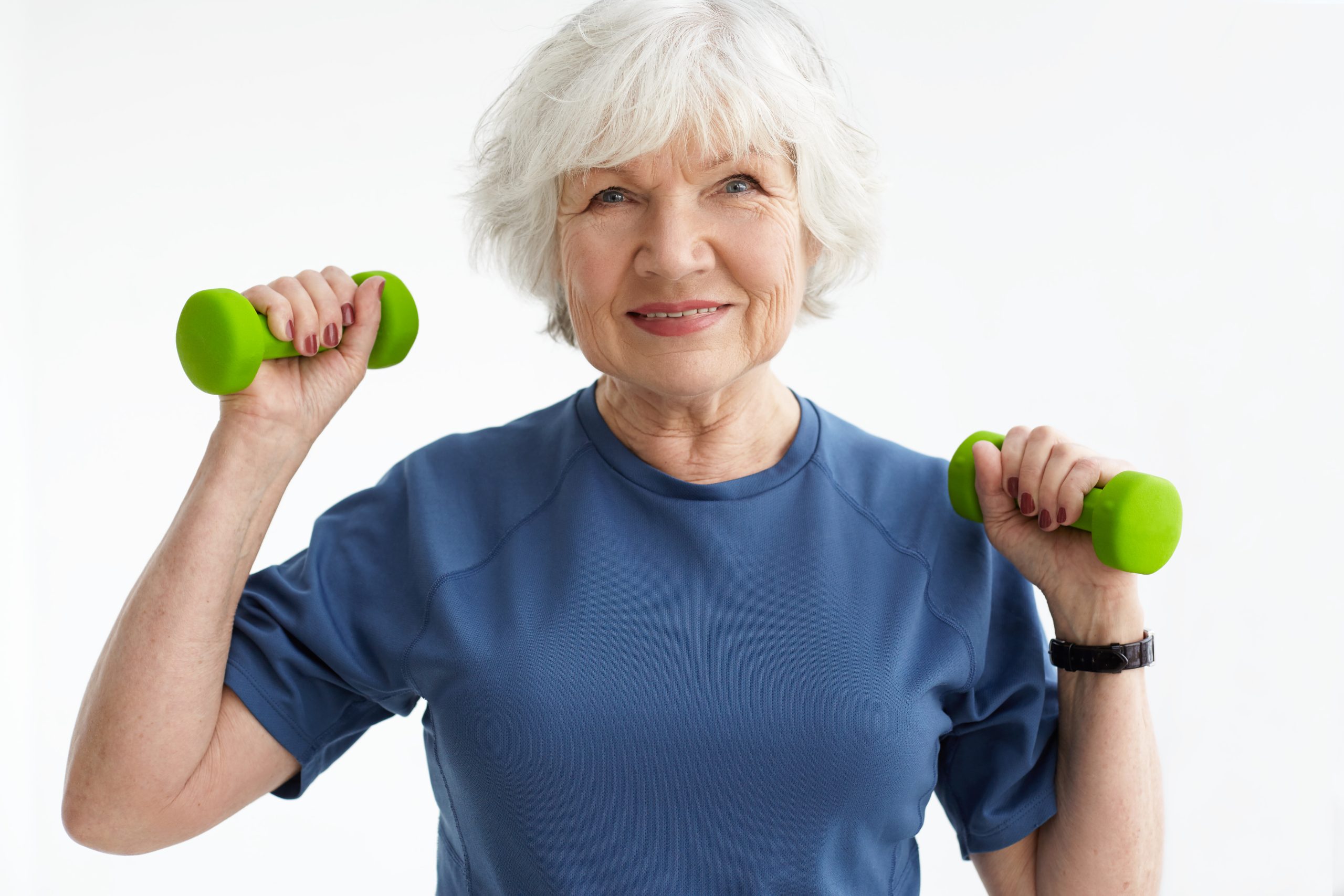
Five exercises to help relieve neck pain

With the Christmas and New Year Holiday period looming, our clinic seems to be buzzing with chats regarding holiday plans.
Road trips seem to be in fashion and while we are excited for our clients, we can’t help but think that road trips can sometimes be a recipe for disaster. They can be the perfect way to aggravate that old back injury or flare up that touchy neck! Neck pain from prolonged sitting associated with road trips is something we see so often in the clinic.
At Pivotal Motion we are all about ensuring our clients are well equipped to manage these so called ‘disasters’ so that everyone can enjoy a painfree holiday.
The aim of this blog is to highlight 5 exercises we believe are effective in relieving neck pain.
1. Chin Tucks
This exercise is a clinic favourite as it is the perfect ‘reset button’ for correcting our head and neck posture. No matter what type of injury is present in the neck, the chin tuck is almost always prescribed because the mechanism behind this exercise is to restack the bones and joints of the
neck. This promotes correct posture which is one with the least amount of stress and strain on the neck musculature.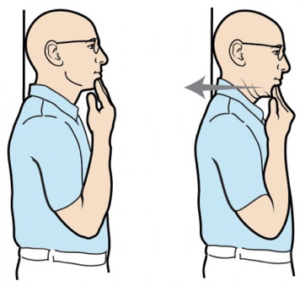
How to perform this exercise:
- Start by sitting and standing while focusing your vision at a specific point across the room.
- Gently move your head back in a purely horizontal fashion so that you tuck your chin backwards against your neck. The motion is similar to producing a double chin.
- You can place a couple of fingers on your chin to aid with the movement.
- Repeat for about 5-10 repetitions.
Shoulder Blade Pinches:
We always tell our clients that the body is an interconnected system meaning that poor posture in one area can affect another area. A classic example is a forward head posture leading to rounding of the shoulder blades forward and a ‘hunched’ upper back. This can be vice versa too. The shoulder blade pinch exercise is another postural corrective exercise. It promotes a more upright body position, leading to the least amount of stress on the muscles of the neck/back. Less stress means less pain.
How to perform this exercise: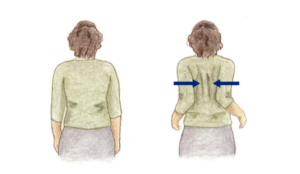
- Start by standing upright and relaxed while looking across the room. The head should not be looking up or down.
- Squeeze your shoulder blades backwards as if you are trying to grip a pencil between them.
- At the end of the movement, hold the contraction for about 5 seconds.
- Repeat for about 5-10 repetitions.
Scalene Stretches:
A consequence of maintaining a forward head posture is the tightening of the scalenes. These are a group of muscles on either side of the front of the neck. The action of this muscle is to laterally (side) flex the head to the same side as the muscle. The scalene muscles also plays a crucial role in breathing as it helps elevate the first two ribs.
Any pain felt in front of the neck and sometimes referring even into the pec region or down the arm towards the thumb and index finger, may be associated with tight scalenes. Therefore, stretching the scalenes can be beneficial in reducing neck pain.
Here is an image of the scalenes and it’s referral zone for pain:


How to perform a scalenes stretch: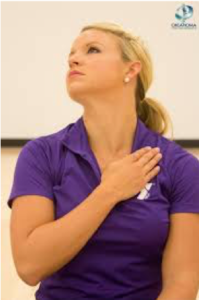
- Starting position is standing or sitting upright and relaxed.
- Bend your head upwards towards the ceiling and then towards one side so that the ear almost touches the shoulder. Use your hand to stabilise the collar bone down on the side being stretched to further intensify the stretch.
- The stretch should be felt on the side of the neck opposite to where the head was bent.
- Hold this stretch for 30-45 seconds. Repeat regularly through the day and do both sides.
Theraband Lat Pull Downs:
Another common sign of poor posture is the elevation of the shoulder blades above the normal limits. This is associated with the classic forward head posture. The tightness in the neck musculature such as the scalenes and upper trapezius, can lead to this irregular positioning of the shoulder blades. This exercise targets the latissimus dorsi muscle which is a shoulder blade depressor. Strengthening this muscle leads to better positioning of the shoulder blades and consequently better posture. This then leads to a reduction in neck pain.
How to perform this exercise:
- Jam a theraband between a door and a door frame in a way that each free end of the band is dangling from the top of the door.
- Starting position is sitting down on a chair or kneeling facing the door with one hand holding each handle.
- Pull down on the handles bringing your elbows towards the sides of your body. Squeeze your shoulder blades backwards while doing this.
- At the end of the movement, hold the contraction for 5 seconds. Repeat for 10 repetitions.
Neck Rotation:
At times, with neck pain comes neck stiffness or tightness particularly in specific directions. A lack of rotation towards one direction is a common symptom with neck pain. Cervical (neck) rotation is a highly functional movement because we use this to do every day tasks such as turning to look at somebody while talking or turning your head while reversing your car. Therefore, training this motion should never be forgotten. 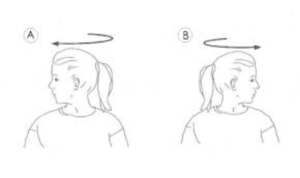
How to perform this exercise:
- Starting position is standing upright with your back against a wall.
- Turn your head towards one direction trying to bring your ear level with the wall. Hold the end position for 5 seconds. Go as far as you can without bringing on sharp pain.
- Return to the starting position and repeat the movement 5-10 times each direction. You can either complete a specific direction for 10 repetitions or alternate between each direction per repetition.
The above exercises should help provide relief from neck pain should it plague you during your holidays. For more information and advice on neck pain, come see our friendly team at Pivotal Motion Physiotherapy. Contact us on 07 3352 5116 or book an appointment online.



